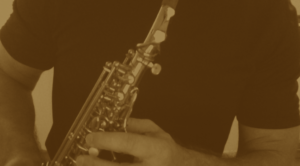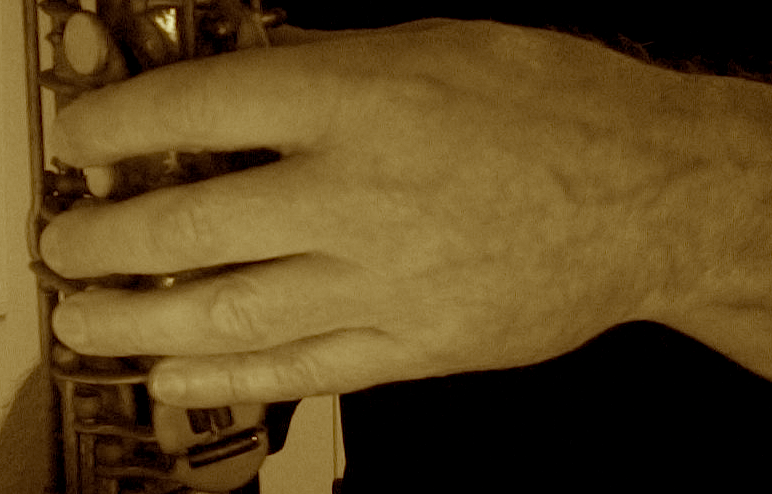The other night while giving a practice coaching session on Zoom to a very good jazz guitarist, an interesting issue arose.
Though he had been putting in long hours of practice, diligently and intelligently working on the specific skills he would like to develop as an improviser, he found his actual experience whenever improvising oddly unsatisfying, sort of “uninspired and disconnected”, to use his words.
I asked him how often he was playing with other musicians on average, and he said usually once or twice per week. I said that that didn’t seem like much, based on how devoted he was to playing jazz.
He went on to say that he had purposely put himself into “woodshed mode” for a few months, to really get his “playing to another level”, and was avoiding jam sessions and some other playing opportunites that he previously participated in.
As I began to ask more questions (about his practice routine, time spent practicing, goals ,etc.), it dawned on me that, although he was practicing improvisation at a furious pace, he was doing very little actual pure improvising.
Allow me to explain.
He had been devoting the vast majority of his practice time to growing his improvisational skills.
For example, he had been practicing:
Improvising over a variety of harmonic forms, as he consciously connected particular dominant 7th chord substitutions via half-step voice leading.
Improvising over an entire chorus of a standard song (in 4/4) while subdividing his ideas metrically in 5/4.
Consciously applying a pre-determined set of altered scales (harmonic major pentatonic, in this case) over the basic iii7-VI7-ii7-V7-I sequence.
And so on.
All of this is good work, no doubt. Great ways to explore the materials of music in improvisation! Practical ways to practice improvising.
But practicing improvising is not entirely the same as purely improvising.
By purely improvising, I mean there is no agenda while improvising. No subtext. No particular goal to consciously aim for. No clearly defined rules to self-consciously abide by. No self-imposed limits.
You see, when improvising just for the sake of improvising, your brain is working in a fundamentally different way than when you are consciously practicing improvisational skills. (And of course, none of this even takes in account the entirely different process of improvising with other people; here I’m just addressing the daily, “by yourself”, practice regimen.)
When purely improvising, you are not so much “thinking like a composer”, as you are reacting, to your subconscious impulses to rhythmically and musically organize sounds as a form of deep self expression. (All of your hard work has been a vital tool to help enable this, of course!)
When practicing improvisation, you are still improvising, but at a less visceral, immediate level. In essence, you now are “thinking like a composer”, more or less. Connecting the dots, creating with a more specific intention, assessing, judging, editing, etc.
And again, that’s good, absolutely essential to progress.
But it in of itself is not sufficient for calling upon your brain to go into that magical world of “accessing the subconscious”, as Sonny Rollins puts it.
For that you need to improvise. Every day. With nothing to aim for except the experience of improvisation itself.
And not only every day, but quite a bit every day.
I recommended to my client that he spend at least 50% of his practice time for the next month just improvising without working on any specific “skills”. This still allows him plenty of time to work on “practicing improvisation” to continue to boost the skills he is hoping to cultivate.
The guidelines I gave him are simple. Here they are:
Follow your desire. Let your curiosity decide what kind of time feel, tempo, mood, etc., you’d like to explore. Let your whim, in the moment, decide.
Stay simple and familiar. Choose something you know really, really well. Maybe a standard you’ve played so many times, you could easily put it in any key you like at will. See that you’re not distracted by the form, but rather, are supported by it (and can trancend it).
Avoid an agenda. Have no particular conscious aim in mind. Leave your “composer’s mind” at the door. Let your muse run free.
Quiet your critical mind. As much as possible, don’t dwell (or even care!) on “how you are doing”. Just see if you can follow your impulses as you improvise over this “old friend” of a form. Let your feeling for moving with the music guide you.
Spend some time each day improvising with no form in mind. Improvise freely over a mode, a groove, a simple motif, a drone, or nothing at all. Let the music have a chance to emerge from you with virtually nothing in mind.
Trust your process. Realize that the skills and experiences you’re building are for the actual, in-the moment act of improvisation.In fact, you are still “practicing” even when you are “purely improvising”. Specifically, you’re practicing the psycho-physical state of being that is most conducive to the act of freely expressive and cogent improvisation.
Enjoy! (Play from a place of love, and let the beauty flow through you.)
And that’s it. I’m curious to hear back from my client in a couple of weeks, but I predict he will have good things to say about his new process, as he learns to more optimally balance his skills and practice efforts.
So how much do you actually improvise each day, versus practicing improvisational skills? Both are of equal importance.
Here’s a nice little video of two great innovators in modern jazz, Warne Marsh, and his teacher, Lennie Tristano, talking about the musical skills of improvisation (Warne Marsh’s comments), and the actual act of improvising (Lennie Tristano’s comments). Enjoy!




